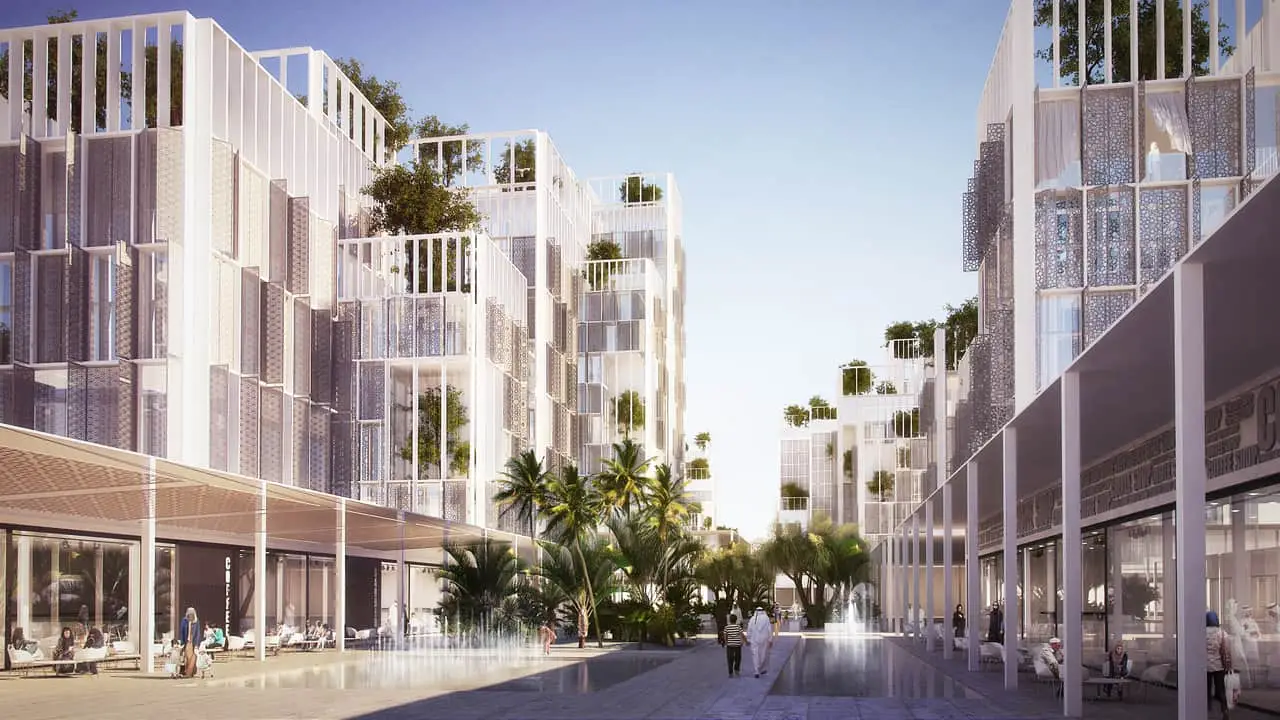Regulatory Excellence for Real Estate Developers: Pre-development Planning Approval
Permits Aren’t Paperwork — They’re the First Deal You Close
Most developers lose that deal before they even know they’re pitching.
Let’s say it plainly:
Planning approval for real estate development can kill your project.
Not because of policy. Not because of NIMBYs.
Because too many treat it like a checklist when it’s a negotiation.
Please do not treat it like a process. Embrace it as a strategic move with people who don’t care about your IRR.
This isn’t about paperwork.
It’s about timing, trust, and translation.
If you can’t speak the language of planners, committees, and local stakeholders, your “sure thing” turns into:
- A 12-month delay
- A 30% redesign
- A funding gap that makes your JV partner nervous
In this guide to planning approval for real estate development, we break down:
- Why developers misread the planning process
- How to turn friction into influence
- What regulators need to say “yes.”
- And how to show up two steps ahead, not six months behind
You’re not managing red tape.
You’re managing perception.
And when you get that part, right?
Everything else moves faster, costs less, and builds smoother.
To understand the Real Estate Pre-Development Process comprehensively, consult How to Master Pre‑Development Strategies in Real Estate: A Comprehensive Guide, our definitive guide to mastering Pre-development optimization, which equips professionals with actionable insights and strategic frameworks.
Access the most comprehensive real estate development success kit for free, including step-by-step strategies, high-impact templates, and $35,000 worth of expert insights to help you develop smarter, cut costs, and lead with confidence—whether you’re planning your first project or scaling your next big move—the Real Estate Development Guide.
Book Your 1:1 Strategy Session for direct value creation.
Planning Approval for Real Estate Development Isn’t Paperwork — It’s Persuasion
The quicker you understand that, the fewer scars you’ll carry.
Most Developers Prepare Documents — Not Arguments
Here’s the default process most teams follow:
- Submit drawings
- Attach reports
- Check zoning
- Wait for a call
But planning approval for a proposed development isn’t awarded for tidy documentation.
It’s won with framing, trust, and alignment.
Planning isn’t a transaction.
It’s a conversation with people evaluating far more than setbacks and parking ratios.
They’re asking:
- Does this project serve the public, or just the developer?
- Will we get community backlash if we approve this?
- Does this team understand the spirit of our plan or just the code?
If you don’t walk in speaking their language, you’ll spend six months learning it the hard way.
Influence Happens Before Submission, Not After Rejection
High-performing developers don’t wait to “see how it goes.”
They engage early — not with entitlement, but with strategy:
✅ Pre-application meetings that ask questions instead of selling a vision
✅ Local policy analysis before a single line is drawn
✅ Political mapping before any public statement
✅ Third-party inspection and validation that backs your intentions
The result?
- Faster review cycles
- Fewer resubmissions
- Lower perceived risk
- Long-term trust
Everything changes when planning officers see you as a partner, not a problem.
📊 APA Insight:
According to the American Planning Association, projects that initiate engagement with stakeholders and planning authorities 90+ days before submission are 45% more likely to receive approval in the first round.
Stop “submitting.”
Start persuading.
This isn’t bureaucracy. It’s your first close.
The Politics Inside Every Approval Process
Understand who’s in the room — and what they’re worried about.
The Decision Isn’t Just Policy — It’s Pressure
Planning approval for real estate development doesn’t happen in a vacuum.
It occurs in a room full of unspoken agendas.
You’ve got:
- City planners under pressure to meet housing targets while maintaining building codes
- Committee members balancing politics and optics
- Local activists with loud voices and social media reach
- Long-term residents worried about “neighborhood character.”
- Agencies concerned with the environment, traffic, or density
And then there’s you — the developer.
To them, you’re the person who wants to maximize profit at their community’s expense.
That’s the perception unless you reshape it.
Speak to What the Planning Department Values — Not Just What You Want
Most planning reports focus on how the project works.
But they don’t answer why it helps.
If you want to win support — and approval — tell the story that matters to them:
- Community benefits like public space, affordability, or walkability
- Job creation — during construction and long-term operations
- Reviving dead or underutilized sites
- Growing the tax base and city resilience
- Environmental upgrades: energy, water, transit, green space
Your drawings won’t persuade them.
Your message will.
Because if you don’t control the story?
Someone else will.
And their version won’t be flattering.
📊 ULI Stat:
Urban Land Institute studies show that projects communicating community benefits are approved 32% faster and face 50% fewer opposition submissions.
Planning isn’t just technical.
It’s political.
But you can win at both — if you know the rules.
Approval Strategy: Think Three Moves Ahead
Because an innovative pathway is faster than a strong argument.
Don’t Just Submit — Strategize the Sequence
Applying without a roadmap?
That’s like breaking ground without a construction schedule.
Planning approval for real estate development isn’t linear.
It’s chess, and seasoned developers map the board in advance.
Before you submit, ask:
- Can we apply for a planning amendment while still refining the design?
- Is a phased submission smarter — land use first, architecture second?
- Will we need zoning relief, variances, or public hearings?
- Which departments (transport, heritage, environment) will weigh in — and what’s their record?
Each touchpoint is a risk node.
And each one can derail your timeline — unless you control the sequence.
The Timeline You Don’t Build Will Be Built For You
Here’s the trap:
You build a pristine 24-month delivery schedule… and leave the approvals window vague.
That window? It expands. Always.
Unless:
- You’ve studied timelines on similar projects
- You’ve mapped internal committee schedules and political cycles
- You’ve looped in external consultants before the submission
- Your construction finance has floated to absorb the planning lag
This isn’t about speed.
It’s about control.
Does your entire project depend on a 60-day approval process?
You’ve already lost leverage.
📘 BOMA Insight:
According to the Building Owners and Managers Association, projects with mapped regulatory pathways achieve 28% faster entitlements and reduce legal costs by 35% compared to those that react post-submission.
You don’t have to fight the process.
You need to know the terrain — and move like a local.
Red Flags, Risk Factors, and the One Meeting That Changes Everything
Because avoiding one mistake can save six months.
Most Delays Aren’t Surprises — They’re Ignored Warnings
You don’t lose months because someone missed a deadline.
You lose them because:
- You ignored the planner, who quietly signaled discomfort
- You skipped over a local heritage overlay
- You underestimated the traffic impact in an election year
- You walked into a community session without knowing the stakeholders
Red flags don’t scream.
They whisper.
Great developers catch them early by mastering the subtleties of planning approval for real estate development.
They build early-warning systems by:
- Talking to policy analysts — not just department heads
- Hiring consultants who’ve worked both sides of the table
- Asking how decisions get made — not just what boxes to check
- Thinking through each stakeholder’s silent concern before it becomes a public issue
If you’re waiting for formal feedback to correct the course,
You’re already behind.
The One Meeting That Changes Everything? It’s Never the One You Expect
It’s not always the city council vote.
Sometimes it’s:
- A casual call with a junior planner
- A hallway chat after a design review
- A small stakeholder roundtable that derails your narrative
- A heritage walk through that flag “fabric” you hadn’t considered
And here’s the truth:
The meeting you underprepared for?
That’s the one that decides your outcome.
Treat every touchpoint—no matter how informal—like it’s the moment that determines your approval.
Because, more often than not… it is.
📊 Planning Review Insight:
According to the UK’s Planning Advisory Service, over 50% of project timeline blowouts are caused by non-statutory objections and stakeholder misalignment, not formal rejection.
Most planning approval for real estate development risks don’t come from surprises.
They come from what you didn’t respect soon enough.
Pay attention early. Adjust quickly. Own the clock before it owns you.
Conclusion: Real Developers Get Approved Faster — Because They Plan Like It’s Life or Death
Because sometimes… it is.
You can’t build anything until someone says yes.
And in real estate development, that “yes” is never automatic.
It’s earned through strategy, empathy, structure, and foresight.
Amateurs submit documents and hope for the best.
Pros engineer planning approval for real estate development, like it’s the first significant transaction — because it is.
They don’t just “get through” the process.
They move through it with the following:
- A mapped approval sequence
- A political read on every decision-maker
- A community-aligned message
- A feasibility timeline that bends, not breaks
- A plan B, C, and D — ready to deploy
Planning permits and approvals aren’t obstacles.
They’re the first gate to capital, confidence, and execution.
Get them right, and money flows faster.
Get them wrong, and no one forgets.
The market doesn’t reward hope.
It rewards developers who understand the rules, read the room, and show up prepared, like they’ve been there before.
If that’s you?
Then, this wasn’t just advice.
It was an edge.
✅ Want to go further?
Access the ultimate real estate development success kit for free! This comprehensive guide includes step-by-step strategies, high-impact templates, and $35,000 worth of expert insights designed to help you develop smarter, reduce costs, and confidently lead. Whether you’re planning your first project or scaling up for your next big venture, the Real Estate Development Guide has you covered?
Book your one-on-one strategy session now for direct value creation.
FAQ on Planning Approval for Real Estate Development
Why isn’t real estate approvals and permits paperwork only?
It’s the project’s permission to exist. It is your first, fiercest barrier
Significant developments don’t start with groundbreaking.
They start with yes.
But before you get to “yes,” there’s a maze of zoning codes, site plans, hearings, stakeholders, and shifting regulations.
Planning approval is your first major milestone — and often the most political.
Miss a step, and you’re not delayed.
You’re dead.
What’s the very first step in getting planning approval for real estate development ?
Pick the right dirt, or the rest doesn’t matter
Every approval battle is won or lost in site selection.
Competent developers choose land that:
- Aligns with zoning or can be rezoned
- Has market momentum
- Matches infrastructure capacity
- Doesn’t trigger environmental red flags
If you’re negotiating uphill on all fronts from day one…
You picked the wrong site.
The site isn’t just a location — it’s a launchpad
Planning approval begins the moment you choose where to build.
Make that choice count.
How can you speed up the planning approval process for commercial projects?
Preparation is your fast-pass
Want approvals faster?
- Bring a complete and clear site plan.
- Anticipate the questions.
- Address the concerns before they’re voiced.
Involve:
- Architects who know code
- Project managers who keep timelines real
- Local consultants who speak City Hall’s language
This isn’t just about design.
It’s about diplomacy.
What role does urban planning play in this process?
It’s the invisible framework that makes or breaks your approval
Urban planning isn’t a hurdle. It’s a guidepost.
If your project:
- Reinforces community goals
- Matches the comprehensive plan
- Fills a documented gap
…then approval becomes a conversation, not a confrontation.
Ignore it; you’ll fight the current instead of riding the wave.
How do zoning regulations shape your path to approval?
They’re not suggestions — they’re structural boundaries
Zoning tells you:
- What you can build
- How tall
- How dense
- How far back
- How many parking spaces
If your vision conflicts with zoning?
You’ll need a variance, rezoning, or a conditional use permit—each with its own timeline and risks.
Zoning isn’t static — but changing it takes time, money, and leverage
So plan accordingly.
What makes a site plan worth approving?
It’s not just technical — it’s persuasive.
A strong site plan includes:
- Building orientation and setbacks
- Parking, access points, and utility placement
- Environmental mitigation strategies
- Visual appeal and market alignment
But here’s the secret:
It also tells a story.
It shows that your project belongs in this community and adds value.
How do you keep construction moving once permits are secured?
Get your approvals done before you mobilize, not after
Want to stay on schedule?
- Clear every planning and building permit
- Confirm fire, water, and utility approvals
- Avoid assumptions — validate everything
Then, coordinate:
- Contractors
- Suppliers
- Property management, if you’re pre-leasing
Planning delays cost more than time.
They cost momentum.
Why is a certificate of occupancy such a big deal?
Because it’s the official “You’re open for business”
The certificate of occupancy proves:
- Your building meets code
- It’s safe for use
- All inspections have passed
No cert? No tenants.
No rent. No return.
It’s not just a form — it’s the final handshake between you and the municipality.
How do market trends affect your planning approval for real estate development?
Build for the demand that’s coming — not the one that’s fading
Trends shape:
- What cities approve
- What lenders finance
- What tenants sign for
Mixed-use, adaptive reuse, last-mile logistics — knowing where the market is headed lets you design for the future, not just the present.
What’s the most innovative way to navigate the planning gauntlet?
Start early. Show respect. Speak their language.
Winning the approval game means:
- Meeting with city staff before submission
- Addressing environmental and traffic concerns up front
- Involving stakeholders early
- Hiring professionals who’ve done it before
Your project has to pass two tests:
- The code
- The community
Pass both, and you build.
Fail either, and you wait… or walk.
Why is planning approval for real estate development not red tape?
Because it’s the test of your vision’s validity
This isn’t admin work.
It’s a strategy.
It’s where great projects live or die — before a single scoop of dirt is moved.
So learn the system. Respect the process.
Then design something so compelling it becomes undeniable.
For a deeper dive into the most effective Real Estate Pre-Development Strategies in real estate, How to Master Pre‑Development Strategies in Real Estate: A Comprehensive Guide, the cornerstone resource for Real Estate Pre-Development optimization, where we consolidate advanced strategies, data-driven analysis, and expert methodologies to elevate your expertise.
Access the ultimate real estate development success kit for free! This comprehensive guide includes step-by-step strategies, high-impact templates, and $35,000 worth of expert insights designed to help you develop smarter, reduce costs, and confidently lead. Whether you’re planning your first project or scaling up for your next big venture, the Real Estate Development Guide has you covered?
Book your one-on-one strategy session now for direct value creation.













